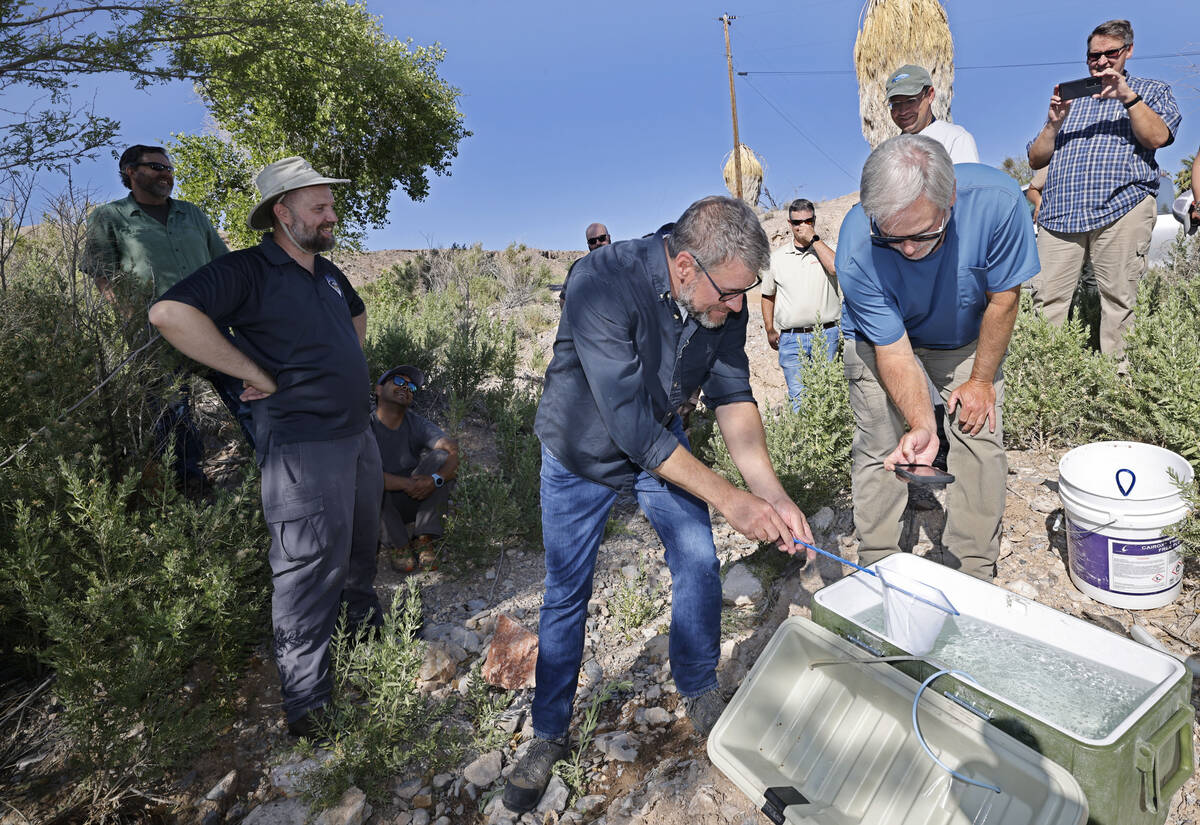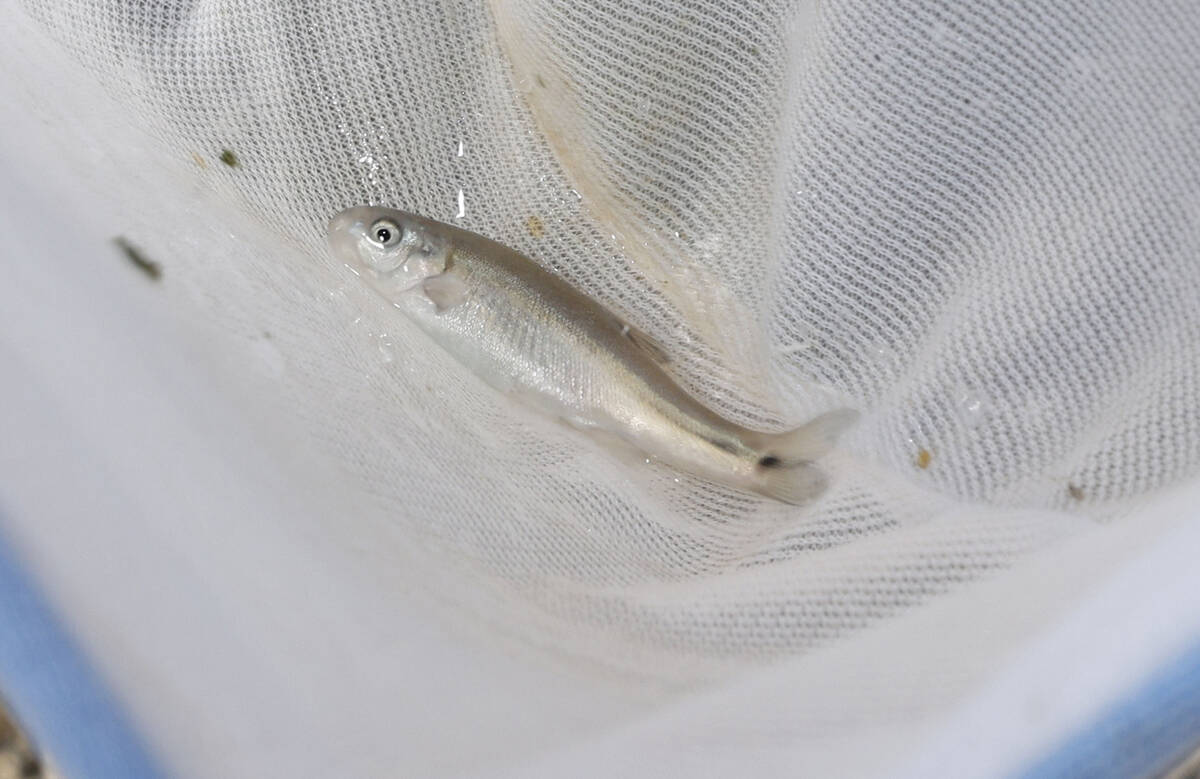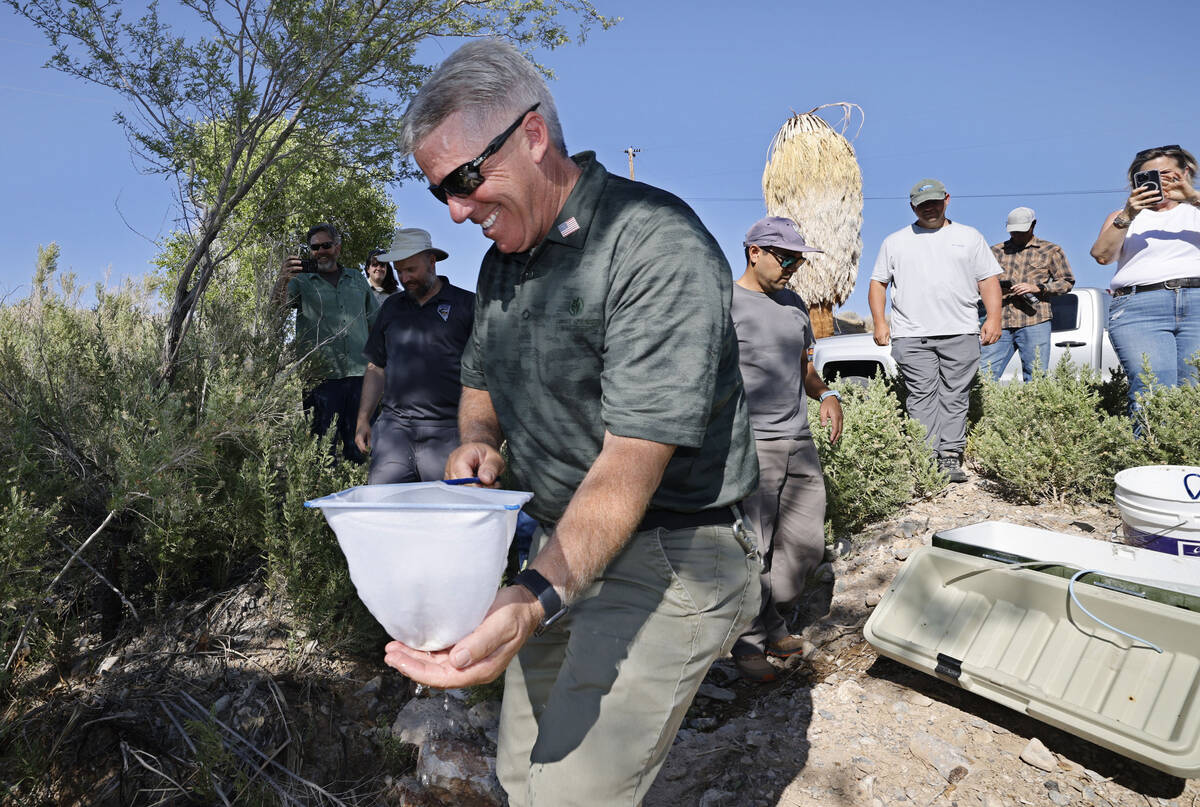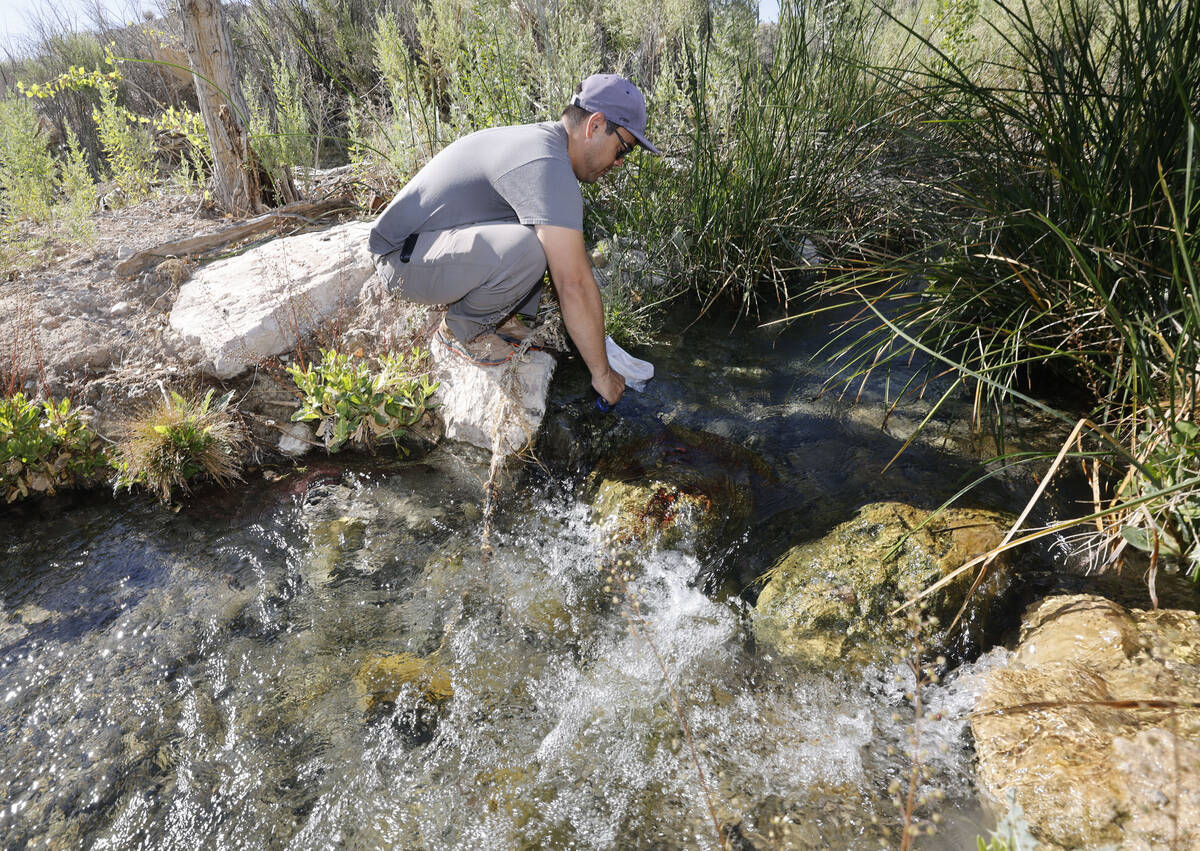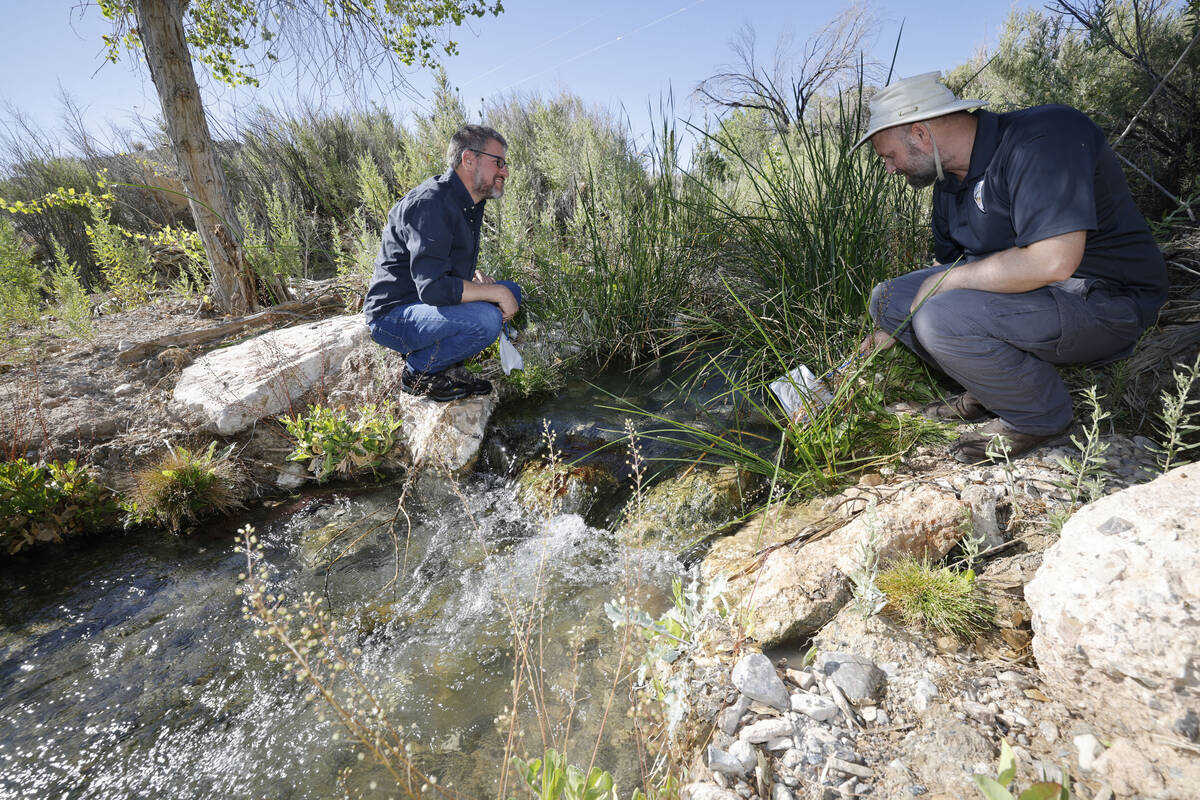How scientists are saving this tiny Nevada fish, one cooler at a time
A small fish found only in the Southern Nevada desert got a big boost this week.
And it’s one that scientists hope signals a turning point for the longtime endangered Moapa dace, a finger-length fish that inhabits a single watershed some 50 miles northeast of Las Vegas.
One by one, 18 captively bred and raised Moapa dace were plucked from a Coleman cooler by a team of biologists and placed into their new natural warm springs home at the Moapa Valley National Wildlife Refuge. The minnows are the first of the species bred in captivity to be successfully released into the wild, said Nevada Department of Wildlife biologist Amos Rehm.
It may not seem like many, but for a species whose total population has hovered around 2,000 in recent years, it represents a monumental step toward bolstering and safeguarding the fish that has been under federal protections for more than half a century.
“Being able to augment our wild populations with captive-raised fish is huge for the species,” said David Syzdek, an environmental biologist with the Southern Nevada Water Authority.
Tuesday’s release follows years of work and research to boost the fish’s population and included staff from the U.S. Fish and Wildlife Service, Nevada Department of Wildlife and Southern Nevada Water Authority.
The Moapa dace populations have come a long way since the mid-2000s, when their numbers plunged to fewer than 500. The species’ natural habitat is entirely contained within the 116-acre Moapa Valley National Wildlife Refuge, some adjacent private land and the Warm Springs Natural Area, a 1,218-acre stretch of land that the water authority purchased for $69 million in 2007 and now maintains.
Biologists have struggled to get the dace to move back into areas that had been devastated by floods and wildfires, Rehm said. The upper portion of the Pederson Spring, where Tuesday’s fish release took place, is one such stubborn stretch.
Rehm said the hope is to one day be able to raise enough fish in captivity at the Lake Mead fish hatchery to be able to recolonize those stretches of the Muddy River watershed that the dace have avoided, and in doing so, get the fish that has been under federal protection since 1967 off of the endangered species list.
Under the current recovery plan, the Moapa dace will remain federally protected until at least 75 percent of its historical habitat is restored and its wild population reaches andremains above 6,000 for five consecutive years.
If they can find a way to scale up the captive breeding, Rehm said, the agencies will be better equipped to rebuild the species’ wild population following future fires, floods or other disasters like a non-native predatory fish invasion. Naturally waiting for those populations to restock could take as long as 10 to 20 years, he said.
“If we can fine-tune this to where this is a tool available, it basically means we’ve quadrupled our efficiency at being able to deal with things,” Rehm said.
But getting to that point could take some time.
The Nevada Department of Wildlife has been raising captive Moapa dace since 2015, when the department took possession of roughly 250 fish leftover from an initial study by researchers at the University of Arizona in Tucson.
Rehm said they had hoped to be able to release anywhere from 200 to 500 dace at a time into the springs, but getting the teeny fish to do the tiny tango has been a monumental challenge for scientists.
The biologists still aren’t exactly sure what triggers the dace spawning behavior. But they hope they can iron out that magical combination of factors in the near future.
Contact Colton Lochhead at clochhead@reviewjournal.com. Follow @ColtonLochhead on Twitter.



